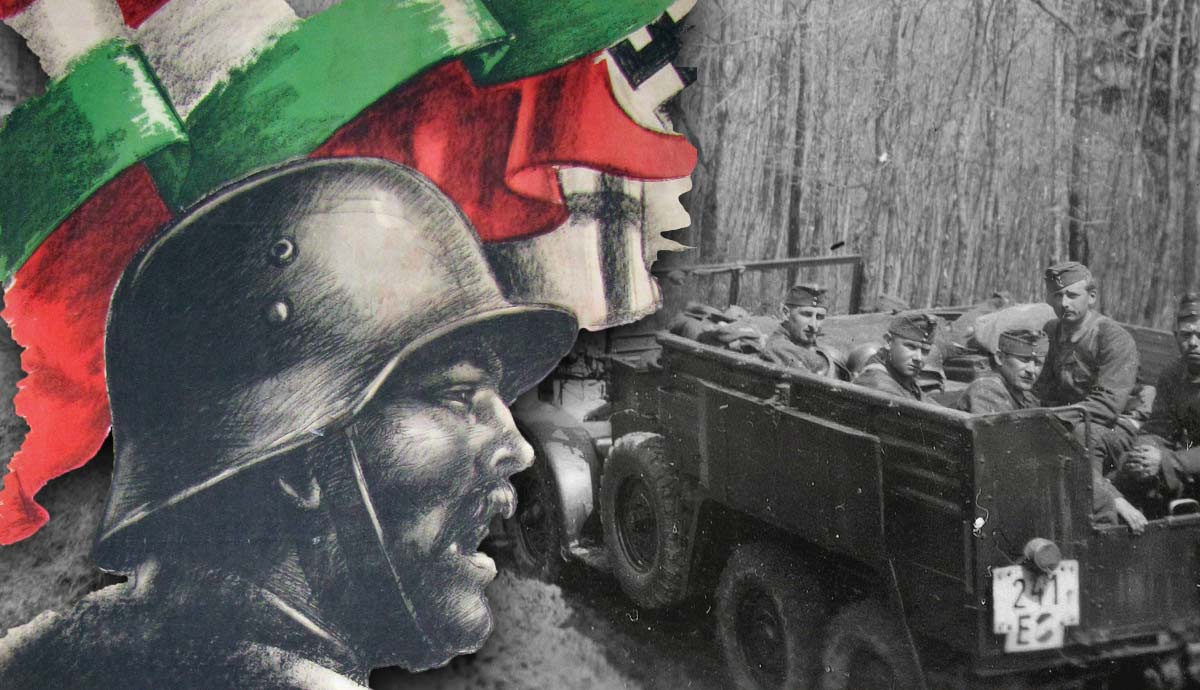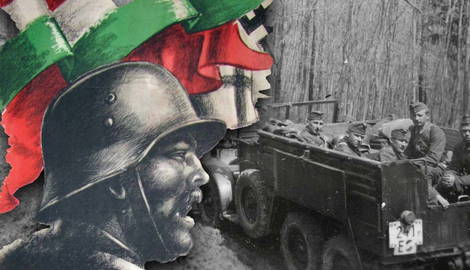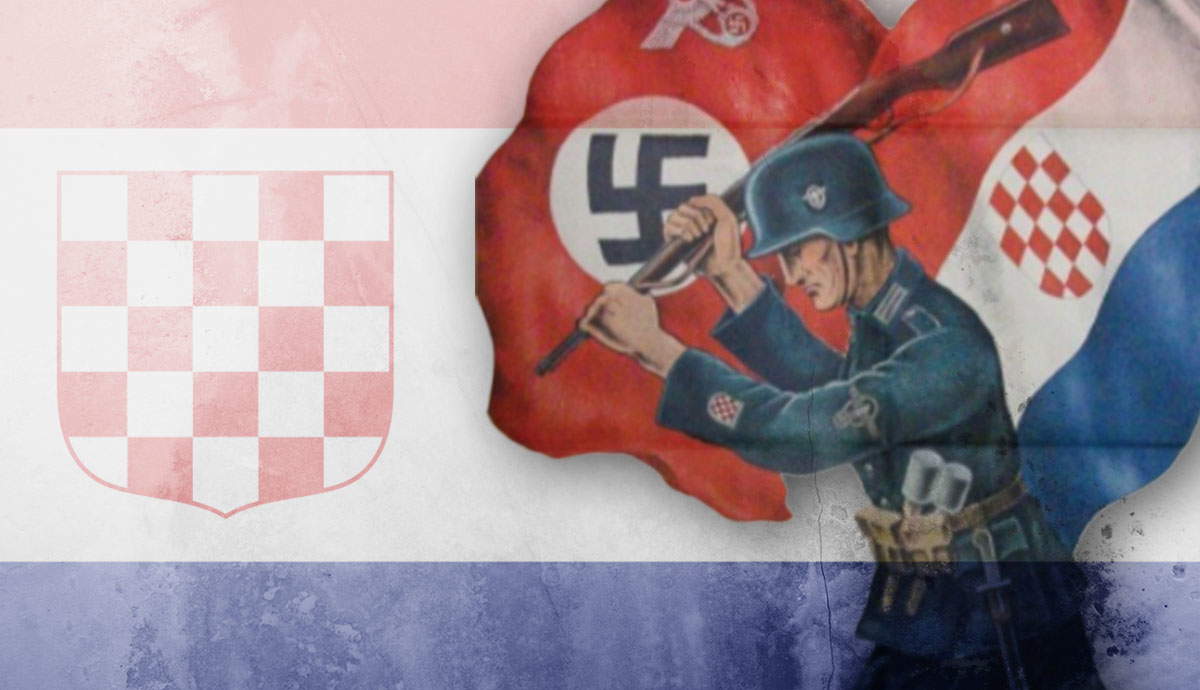
One year after the Second World War began in Europe, the Tripartite Pact was signed, establishing Germany, Italy, and Japan as the core Axis powers. However, numerous other countries have flown under the radar of common knowledge in terms of their efforts in the war. One of those countries was Hungary, which signed the Tripartite Pact and joined the Axis on November 20, 1940, making it the fourth country to join this alliance.
Hungary’s contribution to the Axis war effort would not be a token force either. Geographically and strategically, Hungary sat in a precarious position, directly between Germany and the Soviet Union.
It wasn’t just the war effort in which Hungary contributed. The 1930s saw a massive rise in nationalism in the country, and many leads were taken from Germany. Germany also pressured Hungary to commit atrocities against Jews and other ethnic minorities. As a result, Hungary’s experience during the war was one of misery and death.
Background to Hungary in World War II

Hungary’s participation in the war as part of the Axis did not come out of nowhere. In the First World War, the Austro-Hungarian Empire was allied with Germany as part of the Central Powers, and after the war, the empire was split up into smaller states. The defeat was a humiliation, and the Treaty of Trianon signed between Hungary and the Entente served, in many ways, the same as the Treaty of Versailles that Germany was forced to sign.
When the Great Depression arrived, Hungary, like most countries, was hit hard, and like Germany, it pulled itself into an economically favorable position via similar methods. The prime minister, Gyula Gömbös, appointed in 1932 by the regent, Miklós Horthy, sought a one-party state, withdrawal from the League of Nations, and a revision of the Treaty of Trianon.
Gömbös died in 1936 from kidney failure, but he had put Hungary on a path towards nationalism. Under his leadership, many positions of power were filled by like-minded individuals who continued his work in forging closer bonds with Germany and mirroring many of Germany’s policies. An anti-semitic law was put in place by Kálmán Darányi, Gömbös’ successor. This policy failed to be enough, and with a growing tide of Nazism and antisemitism in Hungary, Darányi resigned in 1938. In May that year, Béla Imrédy was appointed the new prime minister.

Initially, Imrédy wanted to improve relations with the United Kingdom, but this move cost him popularity, and he focused on improving relations with Germany and Italy instead. He further strengthened the right-wing power base in Hungary, alienating political rivals and moving the government towards a more totalitarian outlook. As he drafted a second anti-semitic law, however, his political rivals revealed evidence that his grandfather was Jewish, and Imrédy was obliged to resign.
Count Pál Teleki became the new prime minister and succeeded in pushing through the second law, which reduced Jewish participation in Hungarian society even further. Being Jewish was now seen as an ethnic issue and not just a religious one.
During this time, Hungary was irredentist in nature and sought to restore much of its lost empire. Diplomatic solutions were sought, but when these failed, military action sometimes became necessary. From 1938 to 1941, Hungary annexed parts of Czechoslovakia, Carpatho-Ukraine, Romania, and Yugoslavia.
World War II Begins

When Germany invaded Poland on September 1, 1939, Hungary stayed out of the conflict. This suited the Germans, who were concerned about keeping the conflict localized to Poland and didn’t want it to spread to Southeastern Europe. Initially, Hungary refused to let German troops use Hungary for passage or staging operations but let the remnants of the Polish army, as well as civilians, including Jews, flee into its territory.
On November 20, Hungary officially joined the Axis powers, but the government was reticent about using military force where it could be avoided. The alliance was made mostly out of a need to ingratiate Hungary with Germany.
On December 12, 1940, Teleki signed a treaty of peace and “eternal friendship” with Yugoslavia, which, at the time, had a government that supported the right-wing Hungarian government.
The Yugoslav government, however, was overthrown in March of the following year, and a pro-Western government was installed. This provoked Germany to prepare for an invasion, and Hungary was asked to join. Teleki refused but allowed German troops to cross Hungarian territory. This prompted the United Kingdom to threaten war on Hungary.

Pál Teleki had sought to avoid any military action involving Hungary, and feeling as if he had led his country into disaster, took his own life on April 2, 1941. He was replaced with László Bárdossy, who took a measured approach to the situation. He was not a fascist, but he was convinced that the Axis would win the war, and given Hungary’s geographic location, he sought to appease the Axis powers.
Bárdossy found his opportunity on April 10 when Croatia declared independence. As a former province of Yugoslavia, this gave Bárdossy the excuse to declare that Yugoslavia had already disintegrated, and he moved Hungarian troops in to occupy a portion of Yugoslav territory.

Within three years, Hungary had doubled in size, and with close ties to Germany, the country was enjoying a boom in morale. The rapid German successes had convinced the Hungarians that the war would be over soon and that helping Germany militarily would bring the benefits of a close relationship with an immense superpower.
However, Hungarian border disputes with Romania, another Axis power, were an issue, and it was believed that by aiding Germany militarily, German favor would be bought in settling these disputes.
Germany invaded the Soviet Union on June 22, 1941, supported by its Romanian ally. Many Hungarians felt obliged to join the war effort but assessed their options, especially since they did not have a casus belli. That case came on June 26 after unidentified planes bombed the town of Košice. It is still not known who perpetrated the attacks, but it is suggested that they may have been carried out by the Germans and the Romanians in order to give the Hungarians an excuse to join Operation Barbarossa and invade the Soviet Union. Whatever the truth, Hungary joined its Axis allies.
Hungarian Chief of the General Staff Heinrich Werth predicted it would only take six weeks before the Soviet Union capitulated.
Hungary Joins the Fight

The Hungarians joined their German allies, even though Hitler did not believe Hungarian aid was necessary. Attached to the German 17th Army, the Hungarian forces drove deep into Soviet Ukraine. The beginning of Operation Barbarossa was a complete disaster for the Soviets as division after division found themselves encircled and captured.
On March 7, 1942, Horthy sacked Bárdossy on account of Hungary becoming too reliant on Germany. On March 9, a new prime minister, Miklós Kállay, was appointed, who continued Hungary’s participation in the war but also began talks with the Allies. This latter move raised German ire despite Hungary’s involvement on the Eastern Front.
At the end of 1942 and the beginning of 1943, the tide of the war had turned. The Hungarian Second Army was devastated at Stalingrad. Of the 200,000 Hungarian soldiers who took part, 143,000 were killed, missing, or wounded. The Second Army was finished off at the Battle of Voronezh in January 1943.

With ongoing talks with the United States and the United Kingdom, Hungary hoped for peace. The Germans, unhappy with this situation, prepared to invade their former ally. In March 1944, the Germans launched Operation Margarethe–-the invasion of Hungary.
With no effective military, Hungary was helpless. There was no resistance when German troops marched into Budapest. Bands played ceremoniously while the residents of the city looked on in surprise. With the Germans firmly in control, Horthy was placed under house arrest, and the pro-Nazi Döme Sztójay was placed in control as a puppet of the Germans.
Meanwhile, the Soviet armies pushed westwards. Forced to do the bidding of the Nazis and fearing for the safety of their homeland, the Hungarians swiftly mobilized more armies, but these forces were swept aside by the might of the Soviet offensive.
In September 1944, the Soviet advance pierced the borders of Hungary, and Horthy offered an armistice. The Soviets rejected it, and the Germans, aware of this move, kidnapped Horthy’s son and forced him to rescind the offer. Ferenc Szálasi of the pro-Nazi Arrow Cross Party was installed as prime minister, and the Hungarians fought on with the Germans by their side against the Red Army.

Instead of an end to the war offered by Horthy, the country was subjected to the worst fighting within its own borders. While the armies crumbled before the Soviet advance, Arrow Cross hoodlums stalked the streets, taking out their vengeance on Jewish people and anyone else caught in their crosshairs. Horthy was taken into German custody in October 1944.
From Christmas 1944 to February 1945, Budapest was besieged by the Soviets. The bombardments were brutal, and the fighting tore much of the city to rubble.
On February 13, 1945, Hungary surrendered. German troops and their Arrow Cross allies put up resistance until April when the last of them were driven from the country.
Under Soviet control, the postwar period would see Hungary turned into a communist satellite of the Soviet Union and later a member of the Warsaw Pact.
After the war, Horthy was released by American troops in 1945 and went into exile in Portugal, where he lived until his death in 1957.
Hungary & The Holocaust

Following Germany’s lead, Hungary had implemented several laws restricting Jewish people from participating in Hungarian society. After Hungary joined the war effort against the Soviet Union, these practices continued. A third law was adopted that prohibited sexual relations and marriage between Jews and non-Jews, and the Hungarian government began transferring thousands of Jewish people to German control. The vast majority of these victims were murdered.
By 1942, although small, the Hungarian army had become known for its brutality. In January of that year, Hungarian troops massacred 3,000 ethnic Serbians and Jews near the city of Novi Sad.
Under Kállay, the repression of Jewish people continued but was not as severe as the treatment of those under German control. For the most part, Jewish people living in Hungary were protected somewhat by Horthy, who kept the anti-Semitic groups at bay that wished to conduct physical harm against Jews.

After Germany discovered Hungary’s peace talks with the Allies, however, Hungary was pressured into removing any governmental protection of the Jewish population, and deportation began in earnest to placate an irate Germany that threatened to invade.
After the resignation of Horthy and the appointment of Ferenc Szálasi in complete control of the Hungarian government in October 1944, Szálasi tried to restart the deportation of Jews, but the crumbling Axis control around him made it impossible.
By the end of the war, out of Hungary’s Jewish population of 750,000, 550,000 were killed.

Hungary’s position during the Second World War was an unenviable one. Caught between the Nazis and the Soviets, Hungary was forced to make decisions to placate these two juggernauts, and in the course of doing so, the Hungarians had to give up on designs of forging their own path.
Today, the legacy of this time is ambiguous. Despite being a victim of circumstance, the Hungarians made choices that contributed to the Holocaust, as well as committing other atrocities.










